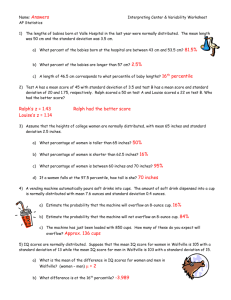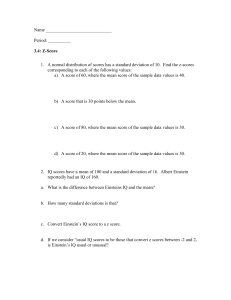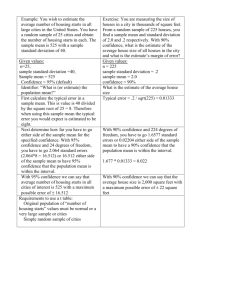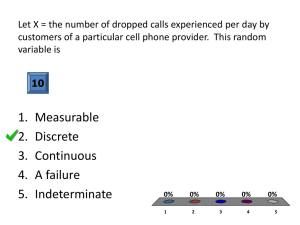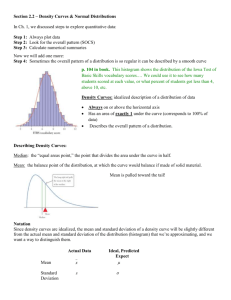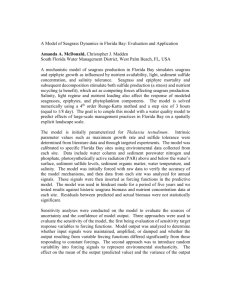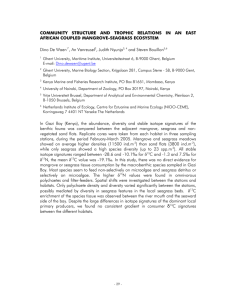Lab #1: Scientific Method & Variability in Data (Handout)
advertisement
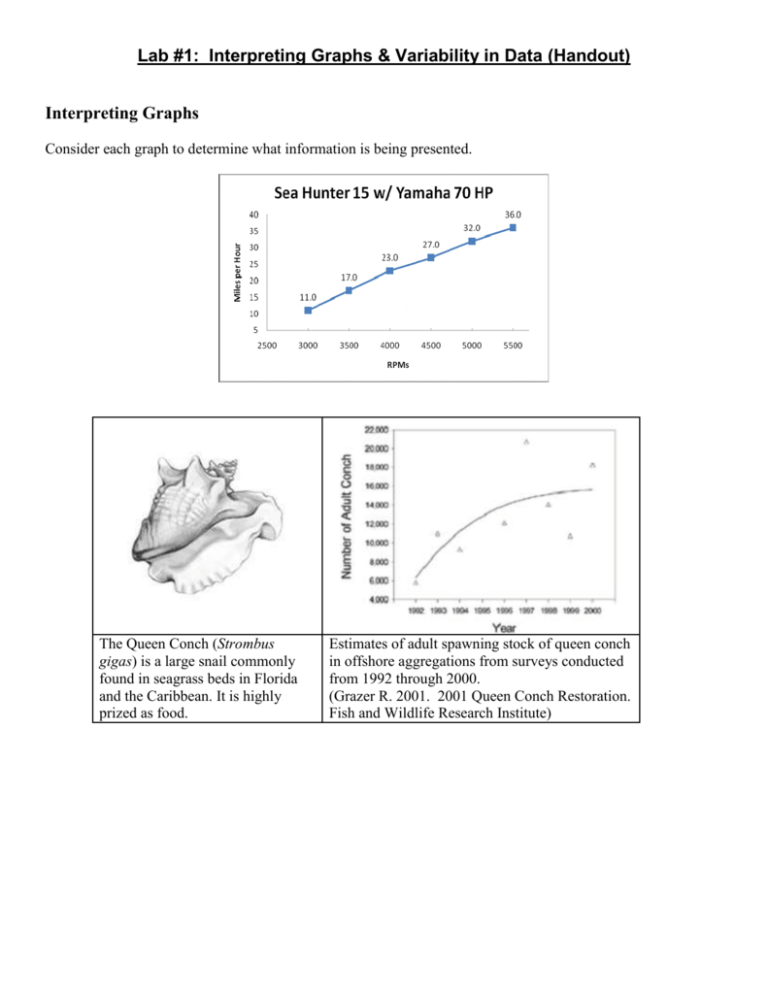
Lab #1: Interpreting Graphs & Variability in Data (Handout) Interpreting Graphs Consider each graph to determine what information is being presented. The Queen Conch (Strombus gigas) is a large snail commonly found in seagrass beds in Florida and the Caribbean. It is highly prized as food. Estimates of adult spawning stock of queen conch in offshore aggregations from surveys conducted from 1992 through 2000. (Grazer R. 2001. 2001 Queen Conch Restoration. Fish and Wildlife Research Institute) Turtle grass (Thalassia testudinum) is the most common seagrass in South Florida and the Caribbean. Beds of turtle grass are highly productive and provide shelter and food to a variety of animals. Relationship between input of nitrogen (kilograms N per day) from 4 watersheds and receiving water seagrass biomass (above ground blade biomass in grams per square meter) in 19 seagrass beds in Sarasota Bay. (Tomasko DA, Dawes CJ and Hall MO. 1996. Estuaries 19: 448456). The Green Sea Turtle (Chelonia mydas) is found in the waters around Florida where it is now an endangered species. Green sea turtles are herbivores (plant eaters) that feed mostly on seagrasses and seaweeds. Relationship between mean nest temperature during the middle third of incubation and the percent of female hatchlings produced in nests at Tortuguero, Costa Rica. Temperatures below 28.0 C produced a maximum of 10% females while temperatures above 30.3 C produced a minimum of 90% females. (Standora & Spotila. 1985. Copeia 1985(3): 711-722.) Variability in Data Many of you will learn more about data analysis as you take more math and statistics courses. We use data to support or reject our hypothesis in the scientific process. This should be a small primer for you on why data analysis is important. Data are usually measured in some fashion. Typically we prefer to measure quantitative data using numbers so that there are fewer biases in our measurements. Sometimes we use qualitative data which are value judgments as deemed by an observer. Both types of data are used for analyses with different testing methods. For our purpose we will use quantitative data. When we measure objects and system responses, there can be a wide range of values. All the values give us an idea about the entire set of objects or the sizes of the responses. Each value is a datum in our data set. The minimum value sets the lower end of the range and the largest value sets the highest end of our range. For example, if we wanted to measure the height of students in a class we could have 25 students (sample size) with the shortest student being 5 feet 0 inches and the tallest student being 6 feet 5 inches (of course, instead of feet and inches, scientists would use the metric system). All that lets us know is that the difference between those two students is 17 inches. What about the other 23 students? There can be a lot of variation in the range of data. For example most of the class could be short and the 6 feet 5 inches person could really stick out. To get a better understanding of what is happening in the data set we like to look at the average (or mean) of the class. This is adding all their heights (data values) and dividing that sum by the number of students (sample size). We also like to have an idea of the standard deviation. This is a measurement of how much the set of values within a sample are different from the average. This allows us to know if most students’ heights are grouped around the average. Most reliable data sets have values that are clustered near the average. Work in groups of four to obtain measurements of the following variables for each person: head circumference (in centimeters = cm), height (in m), and cell phone volume (in cubic mm = mm3). Record these observations in the data sheet provided. Sample Data Calculation Range: Data set: 3, 2, 13, 2, 4 Range is the highest number in your data set (13) minus the lowest number (2): 13-2 = 11 Mean: Data set: 3, 2, 13, 2, 4 Mean is the sum of all numbers (3+2+13+2+4=24) divided by the total number of entries in the data set (n=5 data points): 24/5= 4.8 Standard Deviation: Data set: 3, 2, 13, 2, 4 This is a more complicated calculation but gives important information on the deviation from the mean value for your data set. Many computer programs and calculators are designed to calculate standard deviation. Step 1: Calculate the mean (see above) = 4.8 Step 2: Calculate the deviations from the mean for each data point (this number can be negative) 3-4.8 = -1.8 2-4.8 = -2.8 13-4.8 = 8.2 2-4.8 = -2.8 4-4.8 = -0.8 Step 3: Square each calculated deviation (multiply the number by itself) -1.8*-1.8= 3.24 -2.8*-2.8 = 7.84 8.2*8.2 = 67.24 -2.8*-2.8 = 7.84 -0.8*-0.8 = 0.64 Step 4: Add up all of the squared deviations 3.24 + 7.84 + 67.24 + 7.84 + 0.64 = 86.8 Step 5: Divide this sum by one less than the total number of entries in the data set (n=5 data points) 86.8 / (5-1) = 86.8 / 4 = 21.7 Step 6: Find the square root of this number √21.7 = 4.7

